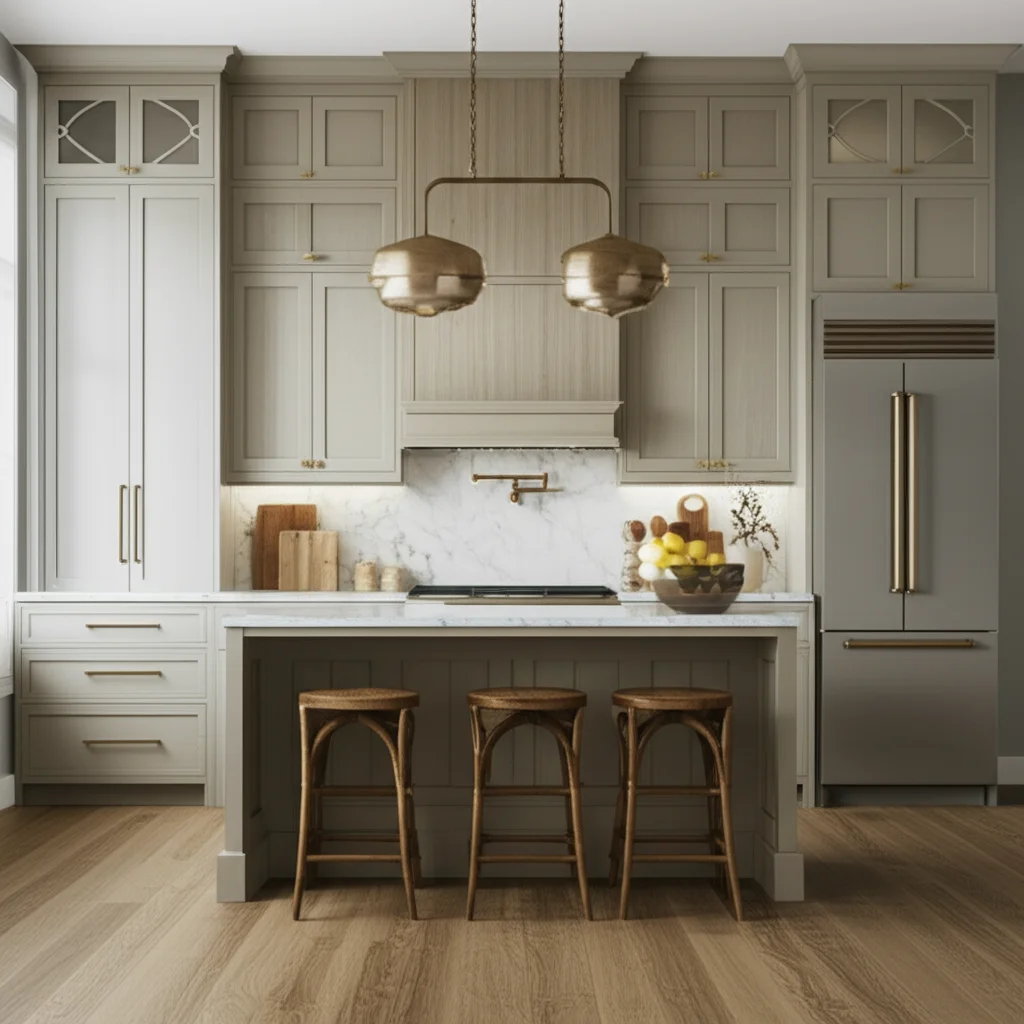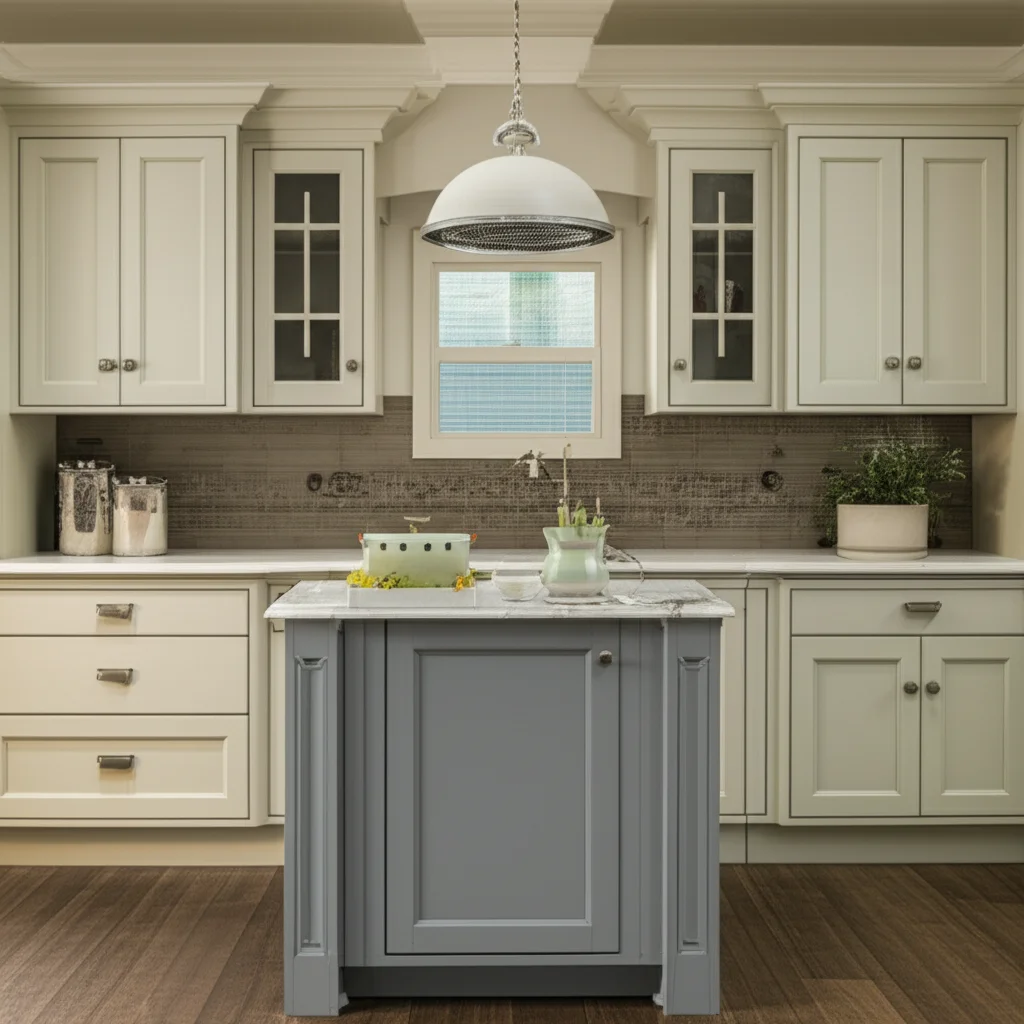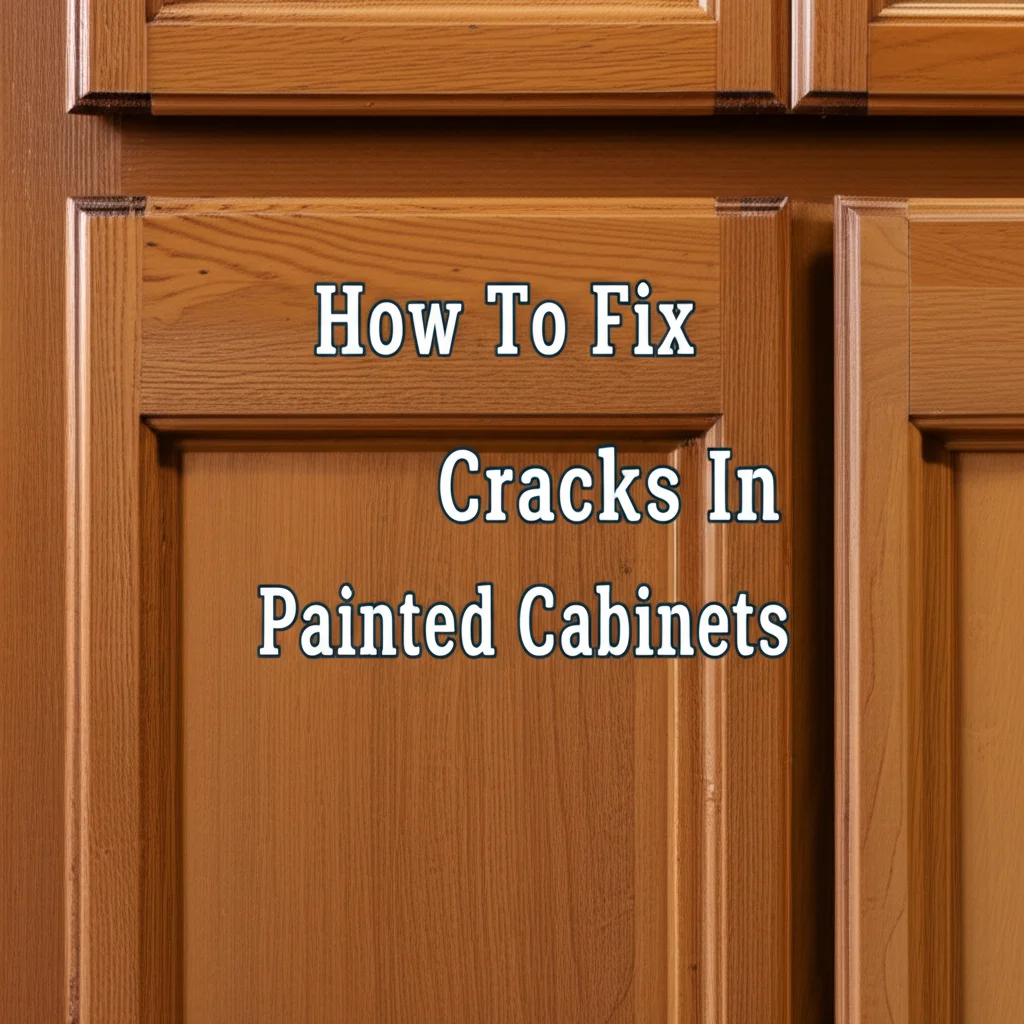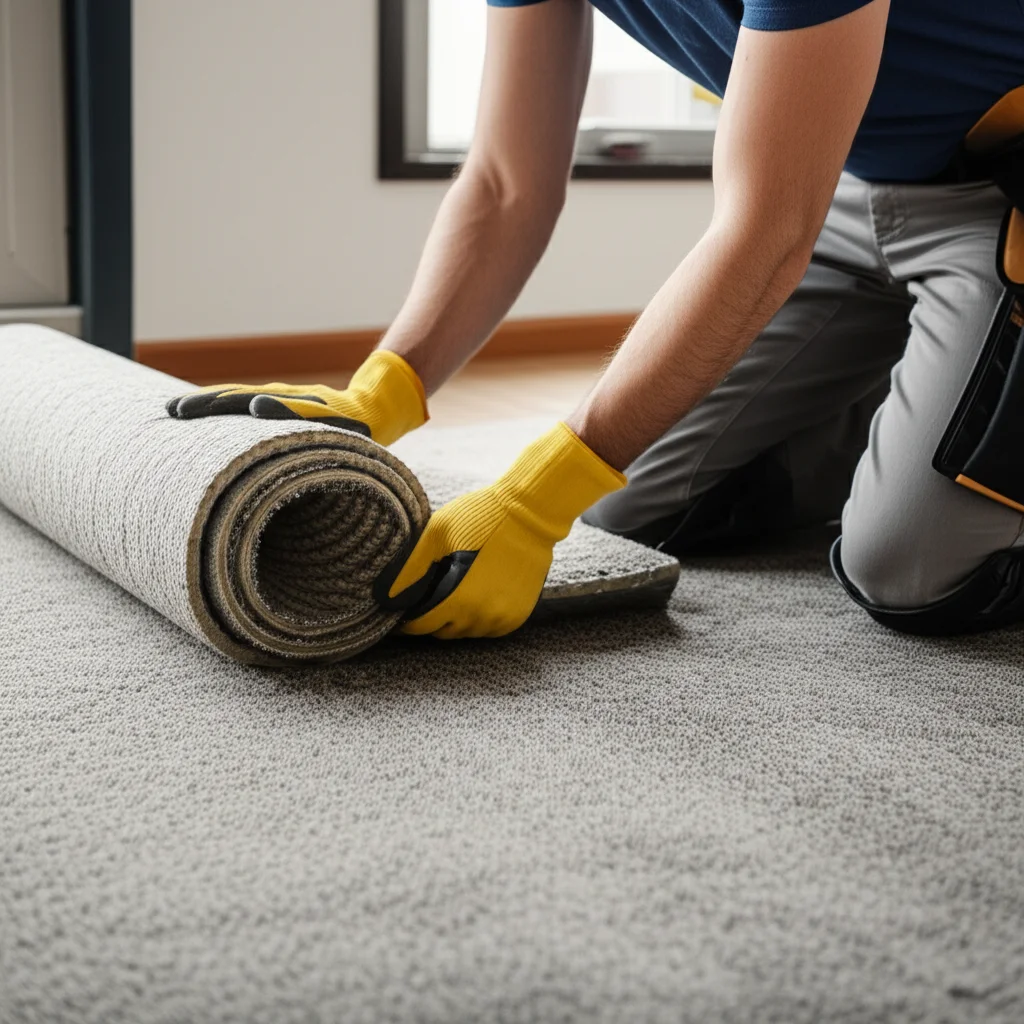· Todd Martin · Home Improvement · 17 min read
How To Find Matching Cabinets

Finding Matching Cabinets for Your Home
Have you considered adding new cabinets or replacing a damaged one? You might wonder how to make it blend with your existing setup. Finding matching cabinets can seem like a big task. However, it is achievable with the right approach and careful planning. You can seamlessly integrate new units into your home’s design.
This article gives you a step-by-step guide to help you find matching cabinets. We will cover identifying your current cabinets, understanding finishes and styles, and exploring your purchase options. You will also learn about refinishing and professional help. By the end, you will have the knowledge to create a unified and attractive space.
Takeaway:
- Identify your existing cabinets’ key features: material, finish, color, and style.
- Take accurate photos and measurements to aid in your search.
- Explore various sources for new cabinets, from manufacturers to custom builders.
- Consider refinishing or repainting existing units for a unified look.
- Do not hesitate to seek professional help for difficult matching challenges.
To find matching cabinets, accurately identify your existing cabinets’ material, wood species, finish, color, and door style. Take photos and measurements, then explore options from original manufacturers, custom builders, or consider refinishing for a cohesive look.
Understanding Your Current Cabinets
The first step to find matching cabinets is to understand your existing ones. You must know their exact characteristics. This involves looking closely at the material, the wood species, and how they were finished. Accurate identification helps narrow down your search options.
Material and Wood Species
Examine the cabinet material closely. Is it solid wood, plywood, particleboard, or MDF? If it is wood, try to identify the species. Common wood types include oak, maple, cherry, or birch. Each wood has a unique grain pattern and color. Knowing the wood species is very important for a good match.
You can often see the wood grain on unfinished areas or inside doors. Different woods accept stains differently. This impacts the final color and appearance. If your cabinets are painted, checking inside the doors helps.
Finish Type and Color
Identify the finish on your cabinets. Is it a clear coat, a stain, or paint? A clear coat protects the wood and shows its natural color. Stains add color while allowing the wood grain to show through. Paint completely covers the wood, giving a solid color.
Note the exact color of the finish. For stains, is it light, medium, or dark? For paint, what is the specific shade? You can take a cabinet door or drawer to a paint store. They can often color-match it precisely. Keep samples of your cabinet color with you when you shop.
Door Style and Hardware
Observe the door style of your cabinets. Common styles include Shaker, raised panel, flat panel, or arched panel. Shaker doors have a flat center panel with a raised frame. Raised panel doors have a center panel that sits higher than the frame. Flat panel doors are simple and smooth.
Hardware also plays a role in the overall look. Note the style and finish of your pulls and knobs. While hardware is easy to change, it helps with initial identification. A consistent style creates a cohesive appearance.
The Art of Color and Finish Matching
Matching the color and finish is often the hardest part when you find matching cabinets. Even if the material is the same, slight differences in stain or paint can stand out. You need to be very precise here. Achieving a seamless look requires attention to detail.
Color Matching Techniques
For painted cabinets, paint matching is quite straightforward. Take a cabinet door or a drawer front to a paint store. They use a special machine to scan the color. This machine provides an exact formula for a new batch of paint. Make sure to get a sample first to test it in your home’s lighting.
For stained cabinets, matching is more complex. Wood absorbs stain differently based on its porosity and age. Take a sample door or a piece of the same wood species to a professional. They can create custom stain mixes to get closer to your existing color. Remember that a perfect match might not be possible due to natural wood variations. You can learn more about how to match stain on cabinets for detailed steps.
Understanding Finish Types
The finish protects your cabinets and impacts their sheen. Is your current finish matte, satin, semi-gloss, or high-gloss? A matte finish has little to no shine. Satin has a slight sheen. Semi-gloss is shinier, and high-gloss is very reflective. Matching the sheen is just as important as matching the color.
You can buy clear topcoats in different sheens. Apply a test patch on an inconspicuous area if you plan to re-finish. This ensures the new finish blends with the old one. This helps achieve a unified appearance.
Considering Aging and Patina
Over time, cabinets age and develop a patina. Wood darkens, and finishes can yellow or fade. New cabinets, even of the same type and color, will look different because they lack this aging. You must account for this. Sometimes, aging new cabinets can help.
This aging is natural and gives cabinets character. You can try to accelerate aging on new wood with certain techniques. However, a slight difference often remains. Consider this a unique feature rather than a flaw.
Style and Construction Identification
Beyond color and material, the style and construction of your cabinets matter. These elements dictate the overall look and how new cabinets integrate. Getting these details right is key to successfully finding matching cabinets. Different styles create very different feels in a room.
Cabinet Door Styles
Cabinet door styles fall into a few main categories. Shaker style is popular for its clean lines. It features a flat center panel and a simple frame. Raised panel doors have a decorative raised section in the middle. This adds a traditional or formal look. Flat panel doors are completely smooth, giving a modern or minimalist feel.
Other styles include arched panel, cathedral arch, or beadboard. Arched panels have a curved top rail. Beadboard doors feature vertical grooves for a cottage feel. Identify your specific door style precisely. This helps you order new doors that blend in.
Cabinet Construction
Cabinet construction refers to how the cabinets are built. Face-frame cabinets have a solid wood frame on the front. The doors and drawers attach to this frame. This style is common in traditional American homes. Frameless cabinets, also called European style, have no face frame. Doors attach directly to the cabinet box. This offers a more contemporary look and often more storage space.
Another detail is overlay. Full overlay doors cover almost the entire cabinet frame. Partial overlay doors leave some of the frame visible. Inset doors sit flush with the cabinet frame, providing a very high-end, traditional look. Knowing your cabinet construction is vital for a proper fit and appearance.
Drawing and Measuring
Draw a simple sketch of your existing cabinets. Note down the dimensions of each cabinet box and door. Measure the height, width, and depth. Pay attention to how doors open and hinge types. These measurements are critical for ordering new units.
Take clear photos from different angles. Include close-ups of the door style, hardware, and any unique features. These visuals will be very helpful when you discuss your needs with suppliers or cabinet makers. Accuracy here prevents costly mistakes.
Where to Look for Matching Cabinets
Once you know your existing cabinet details, you can begin the search. Finding matching cabinets means exploring various sources. Your best option depends on your budget, time, and the uniqueness of your current cabinets. You have several avenues to pursue.
Original Manufacturer or Builder
Your first stop should be the original cabinet manufacturer. If you know the brand, contact them directly. They might still produce the same cabinet line or have similar options. Provide them with details like the model number, style, and finish. Home builders often use specific cabinet lines. If your home is relatively new, your builder might provide this information. This is often the easiest path to a close match.
Even if the exact line is discontinued, they might have archived records. These records can help in identifying the specifications. This allows you to find a close replacement. In some cases, old stock might still exist in a warehouse.
Cabinet Retailers and Suppliers
Visit local cabinet retailers. Bring your photos, measurements, and a sample door if possible. Many retailers carry a wide range of cabinet lines from various manufacturers. They can help you compare styles, colors, and materials. Show them your existing cabinet details. They might suggest a comparable line.
Some retailers specialize in specific types of cabinets. You might find a better selection at stores focused on kitchen and bath remodels. Online cabinet suppliers also offer many options. Be careful with online purchases. Always request samples to check the color and quality in person.
Custom Cabinet Makers
If your cabinets are unique, old, or discontinued, a custom cabinet maker is your best bet. They can build new cabinets to precisely match your existing ones. They can replicate specific door styles, wood species, and finishes. This option is usually more expensive. However, it guarantees a perfect match.
Provide the custom maker with all your detailed information. Give them a sample door. They can often visit your home to take measurements and assess the existing cabinets themselves. A custom solution ensures a seamless blend with your home’s character.
Salvage Yards and Architectural Resale
For older or antique cabinets, consider salvage yards or architectural resale stores. These places often have reclaimed cabinet pieces. You might find a single door or a small cabinet unit that matches yours. This requires patience and frequent visits. However, it can yield amazing results.
These sources are especially good for unique, vintage, or rare cabinet styles. The pieces often have the same age and patina as your existing ones. This helps with the overall blend. Inspect items carefully for damage before purchasing.
Refinishing or Repainting for a Unified Look
Sometimes, finding an exact match for your cabinets is impossible. Or, you might just want to update your current look. In these cases, refinishing or repainting existing cabinets can create a cohesive design. This option gives you control over the final appearance. It also revitalizes your kitchen or bathroom.
Preparing Cabinets for a New Finish
Proper preparation is key to a lasting and smooth finish. Start by thoroughly cleaning all cabinet surfaces. Remove grease, grime, and dirt. You can use a degreaser solution for tough stains. For wood cabinets, a specialized wood cleaner works well. Learn more about how to clean wood cabinets or how to clean cabinets before painting.
Next, lightly sand the surfaces. This creates a rough texture for the new paint or stain to adhere to. Fill any holes or imperfections with wood putty. Wipe down all surfaces again to remove dust. Remove all hardware and cabinet doors before starting.
Repainting for a Fresh Match
Repainting is an excellent way to achieve a uniform look. You can choose a color that matches a new cabinet, or repaint all cabinets the same new color. Use a high-quality primer before applying paint. Primer helps the paint stick better and provides an even base. Apply thin, even coats of paint. Allow each coat to dry completely before adding the next.
For durability, use cabinet-specific paints. These paints are designed to withstand daily use in kitchens and bathrooms. They often cure harder and resist chipping better. Consider a paint sprayer for a smoother finish. Painting ensures all your cabinets have the same color and sheen. This makes everything look cohesive.
Restaining for Color Consistency
If your cabinets are wood and you prefer a stained look, restaining is an option. First, you must strip the old stain and finish completely. This is a labor-intensive process. Use a chemical stripper or sand down to bare wood. This ensures the new stain penetrates evenly. You can find more information on how to refinish oak cabinets if you have oak.
Once the wood is bare, apply your chosen stain. Test the stain on an inconspicuous area or a scrap piece of the same wood. This helps you achieve the desired color. Finish with several coats of clear topcoat for protection. Restaining allows you to unify the wood tone across all cabinets, old and new. You can also learn how to stain cabinets darker if you want a deeper color.
Seeking Expert Help for Cabinet Matching
Sometimes, the task of finding matching cabinets is too complex for a DIY approach. Or, you might face unique challenges. In these situations, seeking expert help is a smart decision. Professionals have the experience and tools to solve difficult matching problems. They can save you time and potential frustration.
When to Call a Cabinet Professional
Consider hiring a cabinet professional if:
- Your existing cabinets have a highly unusual or custom style.
- The wood species or finish is rare or discontinued.
- You need to add a significant number of new cabinets that must blend perfectly.
- You lack the time or skills for extensive refinishing or repair.
- You are aiming for a high-end, seamless look for a home sale or major renovation.
A professional can accurately identify materials, finishes, and construction methods. They have access to specialized suppliers and tools. Their expertise ensures a better outcome.
Custom Cabinet Makers and Finishers
A custom cabinet maker can build new units to match your existing ones exactly. They can recreate intricate details, specific dimensions, and unique door styles. They work with various wood species and can source specialized materials. This ensures the new cabinets look like they were always part of your home.
Professional finishers specialize in matching existing stains or paints. They use advanced techniques and custom mixes. They can apply finishes that mimic the aged look of your current cabinets. This helps new cabinets blend in more naturally. They can also refinish your existing cabinets to update them and create a uniform appearance across your entire space.
Interior Designers and Remodelers
An interior designer can help if your goal is not just a match, but a cohesive design. They can suggest ways to integrate new cabinets even if a perfect match is impossible. They can advise on complementary colors, materials, or hardware. Their guidance ensures the whole space feels intentional and stylish.
General contractors or remodelers often have connections to cabinet suppliers and custom makers. They can manage the entire process, from sourcing to installation. They ensure that new cabinets fit properly and integrate seamlessly with other elements of your renovation. Hiring a remodeler streamlines the project.
Overcoming Matching Challenges
Even with the best efforts, finding a perfect match for existing cabinets is not always possible. This can happen due to discontinued styles, unique finishes, or the aging of materials. Do not worry if you face this challenge. There are still creative ways to achieve a cohesive look. You can make intentional design choices.
Embrace Intentional Contrast
Instead of forcing a near-match that looks “off,” consider creating an intentional contrast. Introduce new cabinets in a complementary style or color. For example, if your existing cabinets are dark wood, add a new section of light-colored, modern cabinets. This creates visual interest.
This approach works well for island cabinetry, a coffee bar, or a built-in hutch. The new section stands out but complements the original. This makes it look like a deliberate design choice, not a failed attempt at matching. Ensure the contrasting elements share some commonality, like hardware finish or countertop material.
Unify with Paint or New Hardware
If you cannot find new cabinets that match your existing ones, consider unifying both with a fresh coat of paint. Paint can cover up differences in wood species or slight variations in door style. Choose a popular, neutral color that works with your home’s aesthetic. This gives all your cabinets a consistent, updated look. You can paint both old and new units the same color.
Another strategy is to replace all cabinet hardware. New pulls, knobs, or hinges can tie together disparate cabinet styles. Select a hardware finish that complements both the new and old cabinets. This small change can have a big impact on overall cohesion.
Open Shelving or Glass Inserts
If a section of new cabinets simply will not blend, think about open shelving. Remove doors from new wall cabinets or replace solid doors with glass inserts. Open shelving offers a decorative element. It breaks up the uniformity of solid cabinet fronts. You can display attractive dishware or decor.
Glass inserts allow you to see inside. This can create a lighter, more open feel. It also draws attention away from any slight mismatches in the cabinet box itself. Ensure the contents of open shelving or glass cabinets are neat and organized.
Focus on Overall Design
Remember that cabinets are just one part of your kitchen or bathroom design. Think about how other elements can unify the space. New countertops, a consistent backsplash, or updated flooring can pull everything together. These elements can bridge the gap between different cabinet sections.
Lighting also plays a crucial role. Good lighting highlights the best features of your cabinets. It can minimize perceived differences. Focus on creating a balanced and functional space. A cohesive overall design can make minor cabinet variations unnoticeable.
FAQ Section
How do I identify my cabinet’s wood species?
Look at the grain pattern and color of the wood. Oak has a prominent, open grain. Maple has a fine, straight grain. Cherry darkens with age. Examine unfinished areas, like inside doors or drawers, for the most accurate view. You can also consult wood samples at a lumberyard.
Can I paint new cabinets to match old stained ones?
Yes, you can paint new cabinets to match old stained ones. First, prepare both new and old cabinets by cleaning and light sanding. Then, apply a high-quality primer to ensure good adhesion. Finally, apply two even coats of the same paint color to both sets of cabinets for a unified look.
What if I cannot find the original manufacturer?
If you cannot find the original manufacturer, your best options are a custom cabinet maker or a professional finisher. Bring a cabinet door or sample to them. They can replicate the style, wood, and finish. Alternatively, consider refinishing all your cabinets to a new, unified color.
How much does it cost to get custom matching cabinets?
The cost of custom matching cabinets varies widely. It depends on the complexity of the design, the wood species, and the finish. Custom cabinets are generally more expensive than stock or semi-custom options. Prices can range from hundreds to thousands of dollars per linear foot. Get multiple quotes.
Should I get samples before committing to a match?
Always get samples. For paint, get small cans and test on an inconspicuous area or a sample board. For stains, test on the same wood species you have. Observe the samples in your home’s lighting conditions throughout the day. This helps ensure the color and finish look right before you commit.
Can I mix different cabinet styles in one room?
Yes, you can mix different cabinet styles intentionally. This creates visual interest and depth. For instance, combine Shaker doors on perimeter cabinets with a different style on an island. Ensure there’s a unifying element, like a shared color, hardware finish, or countertop material, to make the design cohesive.
Conclusion
Finding matching cabinets helps create a cohesive and attractive home. It involves careful identification of your current cabinet’s features. These features include material, finish, color, and style. You now know where to look for new units. You also understand how to unify them through refinishing or painting. Even when a perfect match is hard, creative solutions exist. You can still achieve a beautiful, integrated look.
Do not let the idea of matching cabinets stop you from improving your home. With the right steps and a bit of effort, you can make new additions blend seamlessly. Take your time, gather your samples, and consider professional help if needed. Start your cabinet matching project today and transform your living space.





